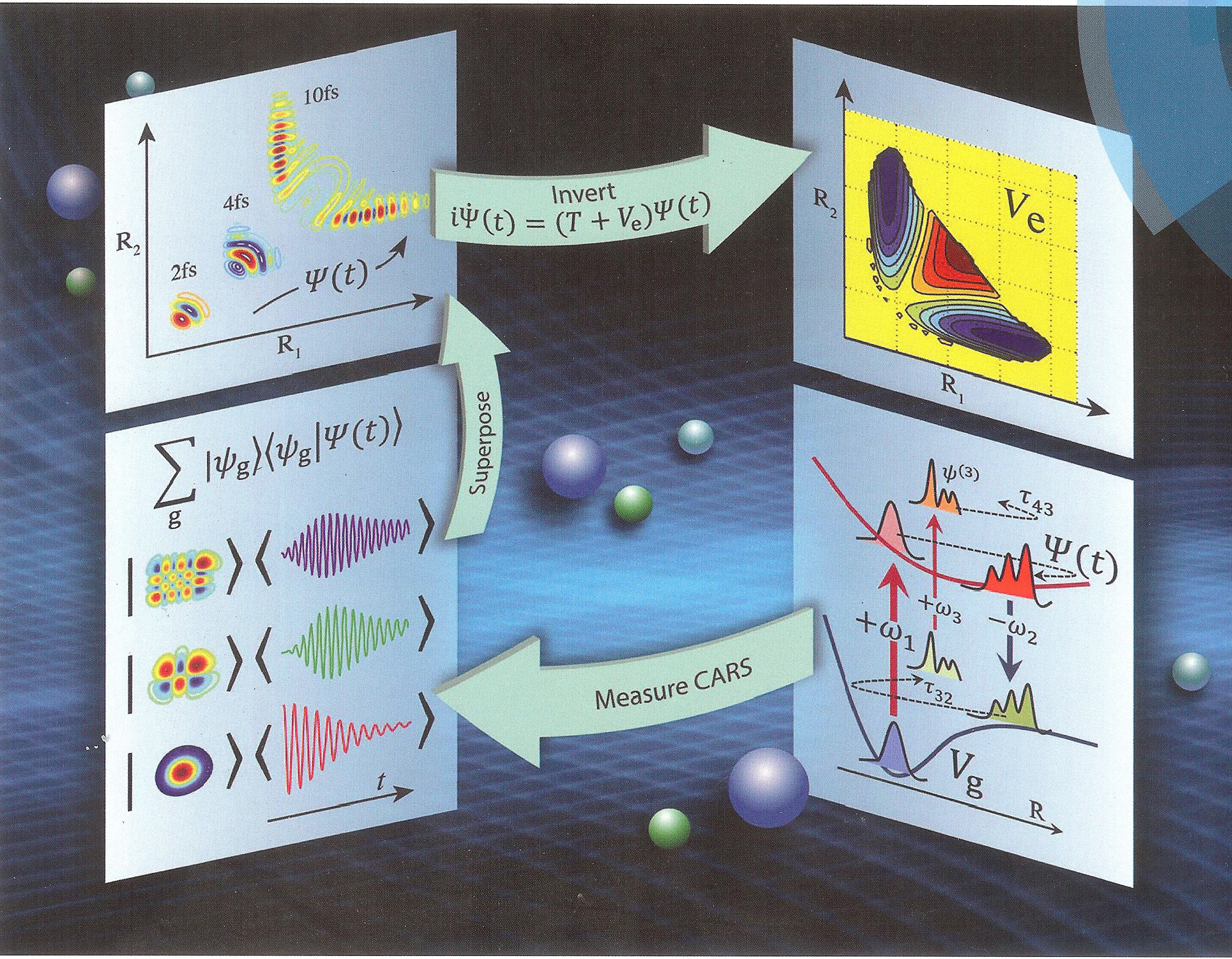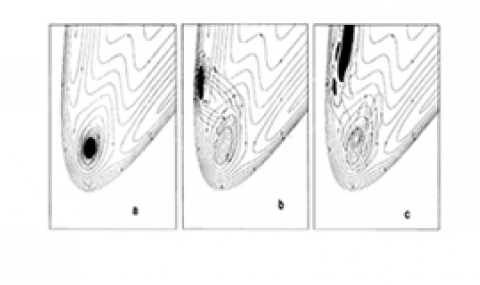There has been spectacular progress in laser technology in recent years, so that it is now possible to make laser pulses which are much shorter than the characteristic time scale for chemical bond formation and breaking. These pulses can be shaped in time and frequency with great precision, and sequences of such pulses can be orchestrated. How can these capabilities be used to break chemical bonds, cleanly, precisely, without unwanted by-products? Prof. Tannor's group has been at the forefront of the development of theoretical concepts and methods to address this question. They have developed pulse sequences to control chemical bond breakage, for shutting down multiphoton ionization, and for robust population transfer between quantum states in many-level systems. Current work focuses on pulse sequences to control of attosecond electronic motion in atoms, spectroscopic inversion to excited state potential energy surface and the physical interpretation of optimal pulse sequences.
Spectroscopic inversion to the excited state potential energy surface from a series of ultrafast pulses
References:
- D.J. Tannor and A. Bartana, On the Interplay of Control Fields and Spontaneous Emision in Laser Cooling, J. Phys. Chem. 103, 10359 (1999)
- R. Eitan, M. Mundt and D. J. Tannor, Optimal Control with Accelerated Convergence: Combining the Krotov and Quasi-Newton Methods, Phys. Rev. 83, 053426 (2011).
- A. Pechen and D. J. Tannor, Are there Traps in Quantum Control Landscapes?, Phys. Rev. Lett. 106, 120402 (2011).
- S. Ruetzel, C. Stolzenberger, F. Dimler, D. J. Tannor and T. Brixner, Adaptive Coherent Control using the von Neumann Basis, Phys. Chem. Chem. Phys. 13, 8627 (2011).
- D. Avisar and D. J. Tannor, Multi-dimensional Wavepacket and Potential Reconstruction by Resonant Coherent anti-Stokes Raman Scattering: Application to H2O and DOH, J. Chem. Phys. 136, 214107 (2012).



